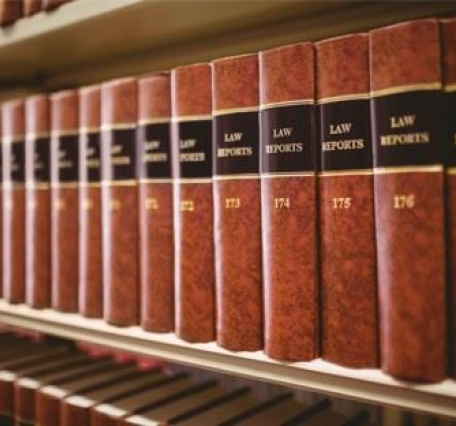

T0447/22 - Claim interpretation: to what extent can the description of a patent be used to interpret the claims?
Catchwords
- On the limits of claim interpretation in the light of the description (see point 13 of the reasons).
- In application of decision G 3/14, an objection under Article 84 EPC that a claim is not supported by the description is open to examination in opposition or opposition appeal proceedings only when, and then only to the extent that, the lack of support has been introduced by an amendment to the patent. It must thus be accepted that the removal of an inconsistency between the description and a claim amended in opposition or opposition appeal proceedings is not possible when the inconsistency previously existed in the patent as granted (see point 83 of the reasons)
Background
Oppositions were filed against European patent No. 2425173 on the basis of the grounds under A.100(a) EPC together with Article 54(1) EPC (lack of novelty) and Article 56 EPC (lack of inventive step), and under Article 100(b), (c) EPC. The interlocutory decision of the OD’s decision that Auxiliary Request 4 met the requirements of the EPC was appealed.
The key issue of contention was the interpretation of claim 1 as granted. Claim 1 reads: "[…] a machining device for machining the material of a pipe system". The device was defined as comprising a) protruding parts, b) means for removing a material and c) a steering device.
The Appeal
The P argued that according to the wording of the claim, a separate steering device (feature ‘c’) is not necessary and the protruding parts of feature a) could also act as a steering device. The P highlighted relevant sections of the description in which the protruding parts of a) act to steer the device. The P stated that although the protruding parts (‘a’) and the steering device (‘c’) were defined in separate features of claim 1, this did not prevent the steering device (‘c’) from comprising the protruding parts (‘a’). The P even stated that feature b) could comprise the protruding parts (‘a’). Under the P’s interpretation, claim 1 could be regarded as defining one single feature but with three different functional requirements.
In contrast, the O argued that the patent did not disclose without ambiguity a configuration wherein the protruding parts (‘a’) acted as a steering device (‘c’). Moreover, the patent did not contain any indication that the axial length of the protruding parts (‘a’) was a criterion for such a configuration. The O stated that albeit the protruding parts (‘a’) had a positioning function, they were not capable of deviating the direction of the machining device. In the O’s view only a cable and a weight were mentioned as possible steering devices (‘c’) in the patent. The sections of the patent highlighted by the P were in the O’s view used to prevent the uncontrolled behaviour of the machining device thus acting as a positioning means and not as a steering device (‘c’).
Other Case Law
The Board stated that the skilled person when considering a claim should rule out interpretations which are illogical or which do not make technical sense, and that technically illogical interpretations should be excluded. To support this view, the Board referred to previously issued decisions T 190/99 and T 1408/04, respectively.
Decision of the Board of Appeal
The Board considered the interpretation of claim 1 as a device for machining the material of a pipe system, whereinthe pipe system itself, including the pipe having a smaller inner diameter, the pipe having a larger inner diameter and the joint area there-between, was not part of the claimed subject-matter, which was solely defined in terms of three structural features a), b) and c).
The Board then looked at these features individually and interpreted them as follows: Feature a) requires that some parts of the machining device protrude. However, the claim does not specify what portion of the machining device the protruding parts are projecting from. Feature b) requires that means are provided for removing material of a joint area between two pipes. Other than the active term ‘steerable’, there are no details given of how the material removing means is shaped, where it is placed or how, if at all, it relates to the protruding parts of feature a). Feature c) reads as a ‘steering device for controlling the direction’. This is not merely a functional aspect that can be assigned to one of the other components of the machining device.
The Board noted that it is a general principle that the claims do not stand on their own but together with the description and the drawings they are part of a unitary document which must be read as a whole (in particular see e.g. T 556/02, T 1646/12, T 1817/14 and T 169/20). However, the Board acknowledged that there are certain limits to this principle and the description cannot be used to "read into the claim features appearing only in the description".
The description indicates that "[t]he machining device may also comprise a steering device". In the Board's view, this is an unequivocal statement that the protruding parts and the steering device must be considered different physical components of the machining device. The Board was of the opinion that the P’s interpretation would lead to a technically discrepant claim interpretation which the skilled person would be unwilling to adopt and would actually deprive the claims of their intended function. Thus, the claim required that there had to be protruding parts (‘a’) that were separate and distinct from a steering device (‘c’).
Under such an interpretation, the claim feature construction excluded embodiments that were described as embodiments of the invention in the patent description, in which case the patent should also be examined under A.84 EPC. Indeed, the Board considered that in the present case, an objection under A.84 EPC was permissible due to the discrepancy between the claims and description resulting from a post-grant claim amendment. Whilst the objection was permissible, the passages of the description identified by the O contained inconsistencies with the claims that were present on grant. As such, the Board rejected the O’s request to revoke the patent due to the absence of further amendments to the description.
The Board was not swayed by the interpretation adopted in national infringement proceedings whereby the protruding parts (‘a’) specified in the claims could also be the steering device (‘c’). The Board of Appeal concluded: "the present case is one where the interpretation of a claim in the light of the description reaches its limits".
The Board agreed with the board of T 197/10 (Reasons 2.3). that held that “in the event of a discrepancy between the claims and the description, those elements of the description not reflected in the claims are not, as a rule, to be taken into account for the examination of novelty and inventive step”. The Board, with the aforementioned claim interpretation, thus arrived to the conclusion that claim 1 of the main request was found to lack novelty in view of the cited prior art. Claim amendments submitted as an auxiliary request were considered novel and inventive.
The Board refused the request for referral of questions of law to the Enlarged Board of Appeal and the decision under appeal was set aside.
More about case: T0447/22




